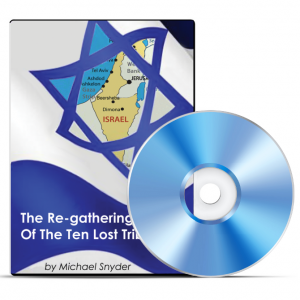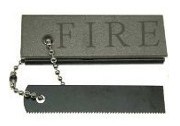Flooding, hurricanes, tornadoes, wildfires and earthquakes can strike at any time and often with little warning. In 2012, nearly 125 million people worldwide were victims of natural disasters, and in the United States, weather-related disasters caused about $157 million in damages.
The time to prepare for a disaster is not before or just after it hits – the best time to prepare is now. Making your own emergency survival kit and having a plan in place could save your life when disaster strikes. Take a look at these tips for how to make your own DIY emergency kit:
Food: For an emergency survival kit, you should have at least a three-day supply of non-perishable food items for each member of your household, including pets. Canned foods, pre-packaged and dry foods like rice and beans are the easiest to store and pack. You can easily store dry rice and beans in mason jars, empty milk jugs and empty 2-liter soda bottles. Choose foods that are high in calories and nutrition. Peanut butter, nuts, tuna, soup, crackers, protein bars and trail mix are easy to pack and offer important nutrients.
Water: For survival situations, each person in your household will need one gallon of water per day for at least three days. Though your pets might not need a full gallon of water per day, you should also factor their hydration needs into your water storage. Buy gallons of drinking water, bottled water, water purifying tablets or water bottles with a built-in filter to ensure that you’ll have more than enough water to survive until aid arrives.
Communication: Keeping in touch with family members, friends and emergency notification news is crucial. It’s very likely that your cell phone and Internet will be down during a natural disaster. Keep a waterproof list of important phone numbers handy if you don’t have them memorized. Keep your cell phone fully charged and have batteries and a radio on hand so you can keep up with news. Read more important tips here about you can communicate during a disaster.
Survival & Medical: Pack a bag with important survival items like a first aid kit, any medications you or your family needs, tissues, toiletries, hand sanitizer, wet wipes, socks, blankets, duct tape, matches, a lighter, an emergency whistle and candles. Click here to read a longer list with suggested items to include. Store your supplies and food in reliable, heavy-duty storage containers that are still easy to pack, stack and carry at a moment’s notice. For added security, choose bins that are waterproof and fireproof.
Shelter & Planning: An emergency survival kit is of little benefit unless you have a disaster plan and shelter or meeting point established. Have an emergency plan in place that includes what to do, where to go and how to get in touch with one another in case you get separated. Choose an emergency plan that’s best suited for your area. For instance, if you live in the Midwest, your tornado emergency plan could involve grabbing the emergency kits and pets and meeting in the basement. If you live in an area prone to flooding or hurricanes, you’ll likely have to take shelter outside of your home. Whatever your plan may be, train all family members on the plan and practice a few times so everyone knows what to do during a disaster. Also, be aware of your town or city’s emergency evacuation plan and factor that into your family plan. FEMA offers this useful resource for creating your own family emergency plan.
Even if you don’t have the money to go out and buy all the items for your emergency kit, you can just start building up your kit with the items you have in your house. Start with the essentials and then add more items over time. While you certainly hope you never have to use it, you’ll be glad to have it if the occasion ever arises.










